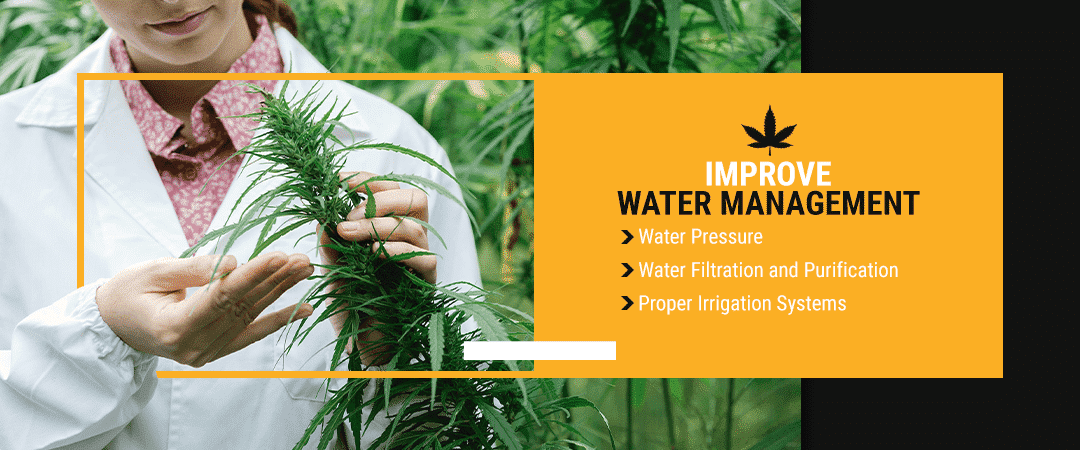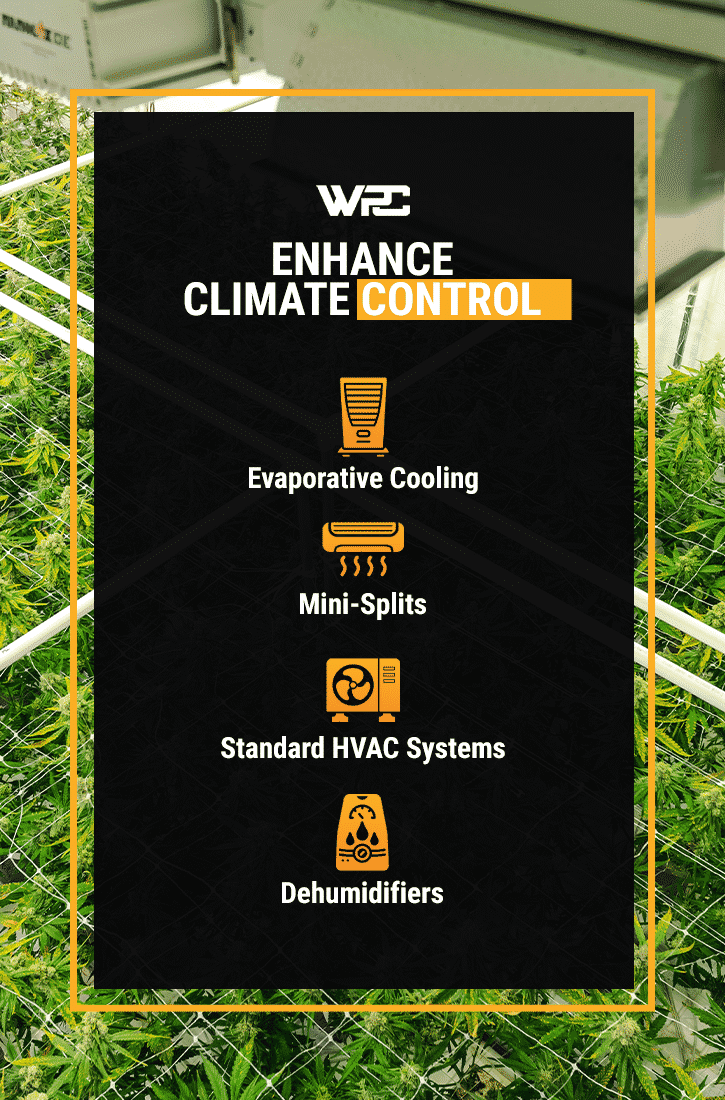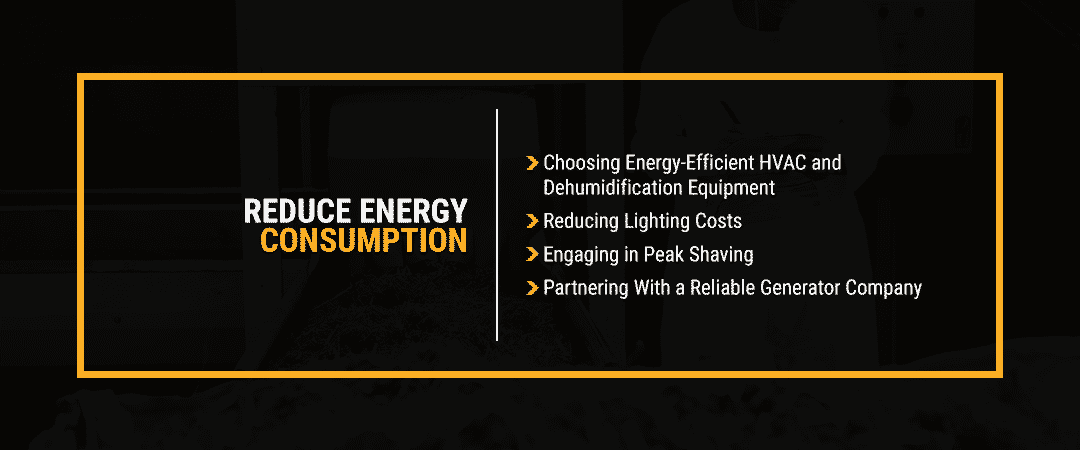The Path to Efficiency — How to Maximize Profits and Minimize Loss When Cultivating Marijuana

Cannabis cultivation is a booming industry — and it is one that will consume more and more power over just a few years. Denver, for instance, estimates that by 2022, as much as 45% of its electricity demand will come from marijuana-cultivating operations — up from 4% in 2019.
Managing a commercial grow operation can be a challenge. To be successful, the facility will need to become more efficient, making optimal use of resources and advanced outdoor growing techniques to boost profits and reduce loss potential. Along the way, it will also need a dependable power source such as solar grids or a generator to power the machinery used for those growing methods. Here is a look at some ways to maximize cannabis profit by improving efficiency in several operational areas.

1. Improve Water Management
Cultivating cannabis uses water for many systems. The plants need irrigation to grow and thrive, and the facility also uses water for processes like cooling, cleaning and dehumidifying.
Effective water management can increase profits and minimize losses for marijuana growers, and it makes the business more responsible and sustainable. Growers can likely find many areas in which to improve water management, from irrigation to sterilization to delivery.
Water Pressure
Using the right water pressure is essential for conserving water during cannabis cultivation. If the water pressure is too high, it may oversaturate the plants and waste water. However, if the water pressure is too low, it may not give the plants adequate water. Choosing the appropriate water pressure is a balancing act that seeks to minimize environmental harm while still providing optimal growing conditions for the plants.
Water Filtration and Purification
Good water quality is necessary to produce high marijuana yields and good crop quality, so implementing effective water filtration and purification techniques can help with cost optimization and minimizing losses. Several techniques are available, including carbon filtration, reverse osmosis and ultraviolet (UV) sterilization.
Carbon filtration is one of the most energy-efficient ways to reduce contaminants like chlorine, chloramine, sodium and bicarbonate. Carbon filtration also helps minimize waste because facilities dispose only of the water used to clean the filters, whereas reverse osmosis generates substantial brine waste. UV sterilization is particularly effective at disrupting the genetic material of pathogenic microorganisms to render them harmless.
Irrigation water should meet a few different criteria to provide the best crop quality:
- Proper soluble salt content: Too much salinity can diminish crop quality and yield.
- Correct proportion of sodium cations to others: Too many sodium cations (charged Na+ ions) relative to the number of other cations can also create excessively saline conditions that reduce crop quality and profits.
- Sufficient balance of elements: The water used for plant irrigation should not contain a high concentration of elements that can cause toxicity or an ionic imbalance in the growing marijuana plants.
- Minimal bicarbonate concentration: Growers should test water levels to ensure that bicarbonate (HCO3-) levels will not overwhelm the concentrations of other cations like calcium (Ca++) and magnesium (Mg ++). Bicarbonate is toxic to plant health, and it also tends to combine with calcium to form lime when the water evaporates.
Proper Irrigation Systems
Using the right irrigation system helps ensure the growing marijuana plants get the water and nutrients they need. Facilities may choose from a few common irrigation methods:
- Drip irrigation: Drip irrigation is the most water-efficient watering method for crops. Pipes send nutrified water through irrigation tubes and into drip emitters, which then drip small, constant amounts of water onto the plants. Facilities can customize flow volume, water pressure, emitter type and container size to their operation’s unique needs. Drip irrigation is highly efficient, and it allows the facility to provide its plants with a precise volume of water and irrigate many plants at once. However, the small drippers can sometimes become susceptible to clogging. They also require manual removal if the facility moves its plants, and the systems can be expensive to install.
- Flood tables: Flood tables are popular in greenhouses because they make it easy to provide copious amounts of water to the plants. They consist of seed trays or other small vessels that the system floods with water and nutrients at predetermined intervals. The cultivation pots soak the water up through their drainage holes, and any excess water flows through a holding tank for reuse. This method is less water-efficient than drip irrigation, and it can lead to excessive humidification of the grow room, but it is also less likely to underwater the plants. Flood tables are also usually less expensive to install than drip irrigation.
- Hand irrigation: Hand watering is probably the most common method for marijuana crop irrigation. Many facilities prefer it because it is a more hands-on approach and offers a daily opportunity to work with and observe each plant. It is also highly economical. Employees typically mix nutrients and add them to the water, and they may use hoses or watering cans to provide water to the marijuana plants. However, this method is the most susceptible to human error — employees may accidentally over- or underwater the plants or provide an incorrect nutrient mix. Different staff members may also use varying techniques, leading to inconsistent plant growth.

2. Enhance Climate Control
Proper climate control is essential for helping marijuana plants thrive, enhancing their quality, boosting yields and increasing overall profits. Adequate climate control also helps reduce loss by ensuring the plants do not become excessively hot or cold. Cultivation facilities take climate control extremely seriously, spending much of their financial and energy budget to ensure optimal conditions. After real estate, climate control is often the single largest capital expenditure a cultivation facility makes.
Many cultivation facilities use a heating, ventilation and air conditioning (HVAC) system with dehumidification to provide consistent, optimal environmental conditions for the plants.
Getting the right HVAC system for a grow room involves several complex steps, from design and installation to commissioning and maintenance. Setting up an optimal HVAC system for a grow room often contains an additional challenge because many marijuana cultivation operations use repurposed facilities — facilities not necessarily designed with horticultural needs in mind. Fortunately, attaining the right setup is often possible with a little creativity and a consultation with a professional mechanical designer who can offer counsel and assistance.
Remember that no matter what climate control option you choose, you’ll need to be sure you have a reliable power system to provide the power it needs. Losing your climate control system, even briefly, could decimate your crops and wreak havoc on your sales. A quality backup generator gives you the uninterrupted power required for high yields and profitability.
Here are a few of the options for a grow room’s HVAC and dehumidification systems.
Evaporative Cooling
Evaporative cooling is an appealing option for many grow facilities because of its incredibly low energy costs. It works by absorbing heat from the cultivation space using the evaporation of water. Though this method uses large amounts of water and can increase humidity in a grow room, it is useful for reducing greenhouse gas emissions and promoting sustainable energy use.
Mini-Splits
Mini-splits are small, ductless HVAC units. They allow for rapid installation, are highly efficient and are less expensive than full-scale HVAC units. Mini-splits are best for smaller facilities — they lack the tonnage to cool larger spaces. They also provide more limited dehumidification than standard HVAC systems.
Standard HVAC Systems
Standard HVAC systems are common, and they are relatively inexpensive to install. Each unit consists of a rooftop unit (RTU) that houses a supply fan, a filtration compressor, a condenser and an evaporator. Air moves from the grow room through ductwork and into the evaporator, which removes heat, and then flows back into the grow space.
Standard HVAC systems are less energy-efficient than the above two options, and the complexity of their extensive ductwork and ventilation requirements sometimes makes them challenging to use in grow operations. A few potential alternatives to standard HVAC systems include variable refrigerant flow (VRF) systems, chilled water systems, water-cooled condensers, cooling towers and geothermal systems.
Standard HVAC systems, especially high-capacity systems, tend to draw immense amounts of power. For this reason, you’ll need a sufficiently sized backup generator that can kick in readily in case of a system overload and power loss.
Dehumidifiers
Dehumidification removes moisture from the environment. It is essential for providing the plants with the right humidity conditions for the best growth and quality. There are several types of dehumidifiers:
- Standalone dehumidifiers: Standalone dehumidifiers offer supplemental dehumidification if the dehumidifying effects of the cooling system are insufficient. When the HVAC system is off, they can also provide primary dehumidification to maintain a consistent relative humidity for the plants. They are inexpensive to run, but they use more energy than many other methods.
- Reheat technology: Reheating involves heating the grow space so that the cooling system can run to act as a dehumidifier without making the air too cold. It allows for more energy-efficient dehumidification, though the energy costs of raising the heat can sometimes offset that benefit.
- Desiccant dehumidifiers: These dehumidifiers use a dry desiccant material — similar to the small desiccant packages found in new shoe boxes, but larger — to absorb moisture. They then vent the collected moisture into an exhaust stream that eventually releases it into the environment.
- Economizers: Economizers work by using the outdoor environment to assist with temperature and humidity management in the grow room. Air-side economizers have limited utility in marijuana cultivation because they cause difficulties with carbon dioxide enrichment and odor control, but water-supply economizers are often useful. They commonly use chilled water systems and water-cooled condensing units to minimize ventilation needs.

3. Reduce Energy Consumption
To maximize overall profits and lower costs, many facilities strive to reduce energy consumption and reduce their utility bills. Spending less on energy needs means a cultivation facility can realize smaller revenues and still make a profit. It also means a facility can use its savings to invest in profitability-boosting measures, like expanding its distribution network or cultivating more plants. Selecting the right power source for your equipment is often an integral part of reducing your operation’s energy use.
Below are a few techniques that grow facilities can use to minimize energy consumption and costs.
Choosing Energy-Efficient HVAC and Dehumidification Equipment
Some heating, cooling and dehumidification systems are more energy-efficient than others, and making even small changes to HVAC and dehumidification can result in significant energy and financial savings. In a standard cultivation facility, about 51% percent of the energy consumption goes toward powering the HVAC and dehumidification systems, so even minimal reductions can lead to substantial rewards. Investing in an efficient evaporative cooling system or a desiccant dehumidifying system, for instance, can go a long way toward helping a facility minimize energy costs.
Reducing Lighting Costs
After HVAC and dehumidification, the lighting in a cultivation facility accounts for the next-largest chunk of energy consumption — about 38%. Investing in more energy-efficient lighting can lower bills. In conjunction with installing a more efficient HVAC system, installing highly efficient light-emitting diodes (LEDs) instead of traditional incandescent bulbs can save a medium-sized or larger grow facility as much as 35% on its energy costs.
Engaging in Peak Shaving
Peak shaving involves using less energy from utility companies during the hours of highest demand by using a commercial on-site generator.
Some operations accomplish peak shaving by turning to alternative energy sources like solar and wind power with energy storage during those peak hours. By using solar panels to collect thermal energy and batteries to store the energy for later use, a cultivation facility that engages in peak shaving can create significant savings.
If you use peak shaving, a backup generator is necessary in case challenges occur with collecting sufficient power or switching between power sources. A backup generator ensures the uninterrupted power you need in these scenarios.
Partnering With a Reliable Generator Company
Partnering with a trustworthy commercial and industrial generator company like Woodstock Power helps you reduce energy consumption as well. An efficient, dependable backup generator helps you prevent product loss and keep critical business applications running without sending your energy bill skyrocketing.
4. Optimize Waste Management
Proper waste management at a grow facility helps minimize losses. By reusing resources like water, facilities can reduce their consumption costs, and by reducing waste overall, they can save money on their disposal feels. Below are a few specific ways a grow facility can optimize its waste management processes.
Composting and Fermentation
Composting and fermentation divert waste from the landfill, promote more environmentally sustainable practices and reduce disposal costs. Facilities can ferment their decaying plant matter through a process known as Bokashi fermentation, which uses special bacteria to turn organic matter into nutrient-rich solid and liquid byproducts that can then be used as fertilizer and soil conditioner. This process occupies a modest physical footprint, produces no heat or gas and will not give off unpleasant odors or attract pests.
Plant matter can also go into a compost collection, along with other biodegradable materials like paper, cardboard, growing media and food waste. A facility might keep its own compost pile or contract with a licensed hauling service to haul excess compost to a certified disposal facility. Some facility rules require that marijuana compost be rendered “unusable and unrecognizable” before disposal. Grow operations can comply with this requirement by grinding marijuana plant matter with materials like cardboard, paper, growing media or dirt.
Proper Hazardous Waste Disposal
Most grow operations produce hazardous waste, often in the form of spent pesticides and fertilizers or the wastewaters that contain these substances. Items like lights that contain mercury are also hazardous waste. Improper disposal of these wastes leads to substantial fines. Grow operations can avoid the financial penalties associated with improper disposal by contracting with certified, reliable disposal facilities that accept these waste items and get rid of them safely.
Work With Woodstock Power to Find a Generator for Your Cultivation Needs
Part of making a grow facility more efficient involves choosing a suitable generator for the size and complexity of the operation. For assistance in locating the right generator — whether it is diesel, natural gas, single-phase or three-phase — work with Woodstock Power.
We can help your facility comply with applicable regulations, produce sufficient power without generating waste and gain the peace of mind of knowing you have a backup generator for your grow room. We also offer portable generators to rent or purchase, so you can choose a rental generator for short-term use when needed.
Contact us today to find a generator for your grow operation or learn more from the most powerful brand in the industry.


